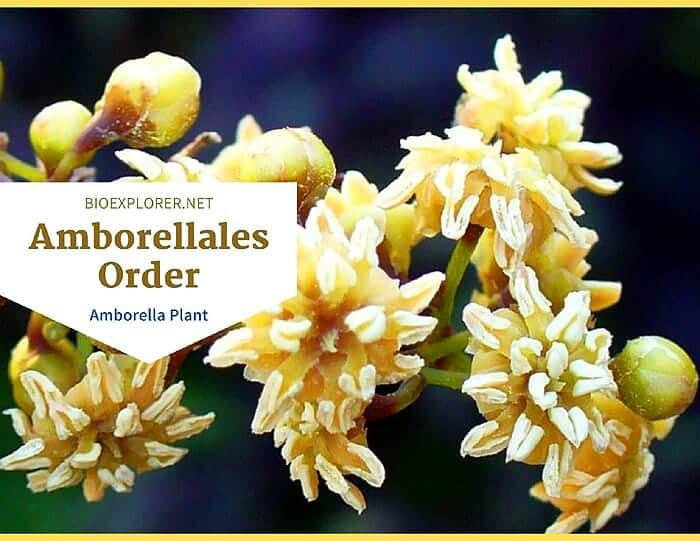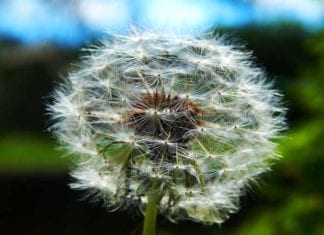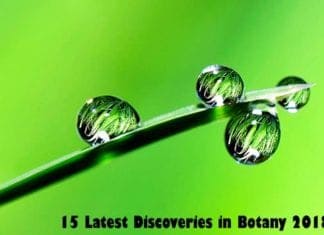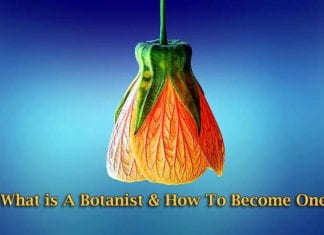
Amborellales plant order is thought to represent the earlier diverging branch among the flowering plants‘ living members. This flower order is represented by 1 species, in 1 genus and 1 family[1].
The single member of Order Amborellales is Amborella trichopoda, under the family Amborellaceae. The molecular phylogenetic analyses of Amborella consistently place it as all the flowering plants’ sister group, making Amborella interesting in the plant systematics[2].
Table of Contents
Amborellales Distribution
Research dealing with leaf physiology and anatomy indicates that the single species of Amborellales is shade-adapted[3].
- Amborella is endemic to the main island, Grande Terre, of New Caledonia (in the southwest Pacific Ocean).
- The distribution has scattered through the elevated central part of the island. Growing in the understory of wet evergreen forests[4], Amborella grows well at altitudes between 500m and 800 m (above sea level).
- Sarraméa (Plateau de Dogy, Col d’Amieu), Tchamba (Haute Tchamba) and Touho are the main locations of Amborella.
Suggested Reading:
Explore The Layers Of The Rainforest
![]()
Amborellales Characteristics
Below are the main characteristics of plants belonging to Order Amborella.
- Amborella is a shrub or small tree. Height can reach up to 8 meters high.
- The leaves are alternate and simple evergreen. The stipules are absent.
- Leaves are about 8 to 10 cm. The two-ranked leaves have serrated and rippled margins.
- Amborella has unisexual flowers with broad laminar stamens.
- Plants lack vessels. The xylem of Amborella contains only tracheids. This type of xylem has been regarded as flowering plants’ primitive feature.
- The species is dioecious; male and female flowers occur in different plants.
- The flowers are small. They occur in small clusters in the axils of foliage leaves.
- Flowers are hypogynous. The stamens, petals, and sepals are attached above the ovary.
- The fruits only contain a single seed. The seed color is red at maturity, measuring 0.4 inches long and 0.1 inches wide.
- The plant species do not contain ethereal cells.
![]()
Amborellales Flowers and Reproduction
Flowers of Amborellales are small, dioecious, spiral, and greenish to whitish. The flowers are arranged in inflorescences in the axils of the leaves.
- The female flowers are usually 3-5 mm in diameter, and the tepals (7-8 tepals) are whitish to slightly greenish. Mainly, there are 5 carpels and 2 staminodes (whitish). The staminodes are large with 2 thecae, which have two pollen sacs. The ovary is pitcher-shaped and greenish.
- Male flowers, on the other hand, have greenish tepals and filament (broad flat). The anther is whitish with 10-14 stamens, and inner stamens are smaller than outer ones. There are 4 pollen sacs in two thecae.
- Pollination in Amborella trichopoda[5] is through wind and insects. The combination of wind and insect pollination[6] demonstrated in the A. trichopoda is unusual in basal angiosperms.
- Amborella has a generalist pollination system since insects ranging in different sizes (1mm to 7 cm in length) pollinate the flowers. The beetles feeding on pollen and spending hours on the leaves and flowers manifest involvement in pollination.
Suggested Reading:
Plant Life Cycle: Alternation Of Generations & Life Cycle of All Plant Types
![]()
Amborellales Unique Characteristics
Amborella is unique because its xylem tissue differs from that of most flowering plants. The vessel tissue contains only tracheids, and it lacks vessel elements. This characteristic is regarded as a primitive feature of the flowering plant.
Another remarkable fact about the Amborella is its genome sequencing[7]. It shows that all flowering plant ancestors, including Amborella, evolved through a “genome doubling event” 200 million years ago.
The entire genome of other species is also contained now in Amborella’s so-called “Mitochondrial DNA[8]. Thus, Amborella is uniques as the only ancient evolutionary lineage survivor that traces back all of the flowering plants’ last common ancestor.
Suggested Reading:
15 Latest Inventions in Botany For 2018
![]()
Amborellales Species
The only species of this order is Amborella trichopoda. Unfortunately, this shrub is not edible.
- It does not possess ethereal oils and is not used as an ornamental plant. However, botanists are interested in studying this species because it is considered the living plant closest to all flowering plants’ origins.
- Additionally, research conducted revealed the diverse groups of phytochemicals[9] in Amborella tissues. The enzymes are abundant in its genome that modifies the compound’s core structure.
- With further investigation, this catalytic feature will enable practical applications in pharmaceutical biotechnology.
Suggested Reading:
Becoming A Botanist? Learn What, Where, How And Why.
![]()















